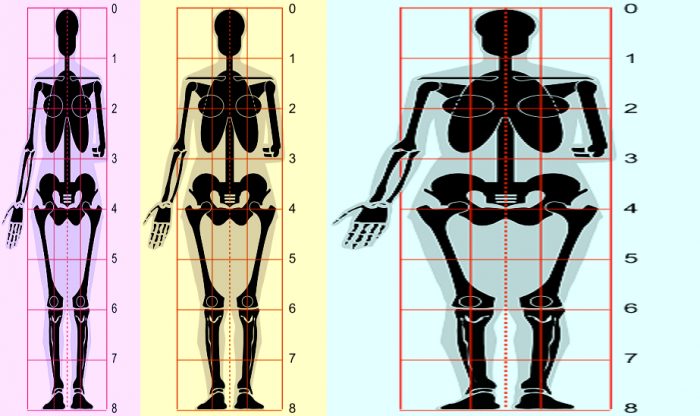Forget the ridiculous food guide pyramid funded by the dairy lobby and beef council.
Instead, take the time to learn about your unique needs—because nothing is right for everyone, and everything is right for someone!
There is no one-size-fits-all, and trying to force ourselves into this paradigm is at the root of so many health issues in the West.
Āyurveda is truly the OG of personalized medicine, with its 5,000-year-old literature describing in great detail the different foods and habits we need to thrive according to climate, constitution, and age. Let’s dive in and take a closer look at the three doshas so we can take the power of daily wellness back into our own hands and bring balance to our lives.
What is a dosha?
A dosha is an energy or force that can be understood through its qualities. Say you were describing water—you would say things like cold, fluid, transmutable, blue, and so on. Similarly, each of the three doshas of vāta, pitta, and kapha have a list of qualities that can be used to understand what is meant when we say things like “that’s so vāta.”
Though all of us have all three, most people tend to have more of one or two doshas that dominate our constitution, which is what it means when you hear people say things like, “I’m pitta,” or “I’m kapha-vāta.” We can also use those words to describe our imbalances, so you have to pay special attention to understand what they mean when saying that.
Doshas are important to understand because as they move in and out of balance, they greatly impact our health, energy level, and mood. Knowledge of how they work is a powerful tool in our arsenal of self-care, so read on to learn more!
Doshas are found not only in our bodies, but in the world around us, including our food, environments, and even the type of exercise we do, which impacts our states of doshic influx.
Let’s take a closer look at each one individually.
Vāta Dosha
You might be vāta if:
>> Your favorite activity changes every week.
>> You rarely eat a full meal and instead graze all day long.
>> Your favorite snack is dill pickle popcorn—yum!
Elements: Air and Ether
Qualities: Cold, Dry, Light, Mobile, Clear, Rough, and Subtle
This means that things like cold weather, dry climates, light foods, mobile activities like travel, jumping, cell phone scrolling, salt scrubs, and wide-open spaces all increase vāta dosha!
Vāta body types are thin, lanky, and may have curly hair and dark skin. They are very creative, have a hard time sitting still, and love trying new things. When balanced, they are flexible, imaginative, and super fun to be around! When imbalanced they are anxious, “flaky,” and can’t get much done. They can seem unstable because the dominance of air, and ether means there is little to ground them. Insomnia and having variable energy are common imbalances for vāta people. Check out my video here to learn more.
Pitta Dosha
You might be Pitta dominant if:
>> You focus to master an activity and like to go deep in your studies.
>> Your number one phrase is, “yeah, but” or “actually.”
>> You “actually” turn red when you get angry!
Elements: Fire and a little Water
Qualities: Hot, Oily, Sharp, Spreading, Liquid, Light, and Fleshy Smell (What?!)
Pitta is increased by hot weather, oily foods, sharp things like jalapenos and cactus needles (ouch!), dry and light climates like the desert (wind fans fire), and they are often stinky! If you are embarrassed by your body odor, there is a good chance you are either pitta dominant or have a pitta imbalance (to understand the difference see this video).
Pitta types are dominated by the fire element with a little bit of water mixed in, which makes them innately intense, fiery, and volatile. They have a medium frame, reddish undertones to their skin and hair, and do better if they stay out of direct sun from 10 a.m. to 4 p.m. in the summer. Natural leaders, Pittas can also be bossy when imbalanced, and have an intensity that makes relaxation an important part of creating balance for them. They are most likely to get “hangry” when they need food, and commonly suffer from rashes, acne, and loose stools.
Kapha Dosha
You might be Kapha dominant if:
>> You still have the pictures from your best friend’s birthday party in third grade.
>> Your favorite snack is sugary sweets.
>> You give the best hugs!
Elements: Earth and Water
Qualities: Heavy, Slow, Cold, Oily, Slimy, Smooth, Dense, Soft, Stable, Sticky
Kapha is increased by eating heavy foods, moving slowly, cold weather, oiling the body, slimy foods, dense foods, soft blankets, stable earth, and laying on the ground.
Kapha has a heavier body type and easily holds mass. They are natural athletes and the best dancers when exercising regularly. They are innately stable due to the influence of the earth, and are sweet, kind, and compassionate. Kaphas love routine but benefit from shaking things up. Of all the doshas, they do quite well with occasional fasting and have to be more careful about gaining weight than other types because they tend toward sluggish digestion.
Having a Dual Doshic Constitution
Most people have a clear dominance of two doshas and one that is the least. For example, I am pitta-vāta, meaning I am strongly pitta, a close second in vāta, and kapha is third. You can be pitta-vāta, kapha-pitta, vāta-kapha…you name it!
How do you keep dual dosha types balanced? In this situation, find your balance according to the season. So in pitta season (a.k.a. summer), follow a pitta decreasing diet, and so on.
~
Questions? Comments? Concerns? Drop me a line below.









Read 15 comments and reply